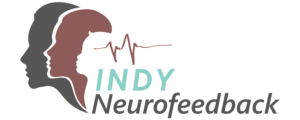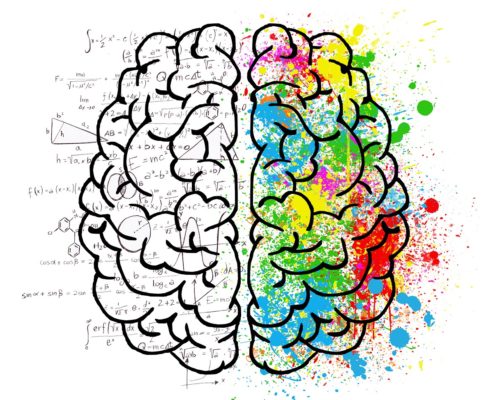Does depression affect men & women differently?
 Absolutely! In fact, according to the American Medical Association (AMA), men and women often experience depression differently. Interestingly, while depression and pain affect men and women in almost equal numbers, symptoms are likely to differ.
Absolutely! In fact, according to the American Medical Association (AMA), men and women often experience depression differently. Interestingly, while depression and pain affect men and women in almost equal numbers, symptoms are likely to differ.
Depressed men are more likely to feel angry, irritable, and frustrated, and often have sleep problems. Men may focus excessively on work to avoid talking about how they feel. They may behave recklessly or abusively, or use drugs or alcohol as ‘self-medication’.
Women more often report feeling sad, guilty, or worthless when they are depressed. More women than men attempt suicide, but men are more likely to succeed (almost four times as often).
Some symptoms of depression in men may include:
- Anger, irritability, and impatience or overreaction to small things.
- Inability to concentrate, forgetfulness or trouble making decisions.
- Isolation, with slow or sudden withdrawal from friends and family.
- Substance abuse. Drug or alcohol problems often hide an underlying problem with depression.
Women who are depressed may exhibit any of the above symptoms, as well as:
- Sleep problems, either sleeping too much or not enough, or finding it hard to get up in the morning.
- Anxiety and/or worry, restlessness, and tension.
- Inability to concentrate, forgetfulness or trouble making decisions.
- Appetite changes, either overeating to feel better, or losing one’s appetite altogether.
- Crying over small things or about nothing at all.
Both male and female clients of INDY Neurofeedback frequently report recurring pain that doesn’t seem to respond to treatment. That can be an early warning sign, because we know that some feelings of pain can be a symptom of depression. INDY Neurofeedback has proven non-medical ways of helping those with pain and depression to recognize ways of retraining their brain to reprocess pain pathways and often finding new relief.
Whether you’re male or female, if it’s depression that is the cause of the pain, or just one contributing factor, knowing the facts is the first step in the process of finding relief!

 Across America, there’s a pill for just about every health issue you can think of. Americans don’t think twice about using them, either. If it’s available in a drug store, then it must be safe, right?
Across America, there’s a pill for just about every health issue you can think of. Americans don’t think twice about using them, either. If it’s available in a drug store, then it must be safe, right?
 According to the National Institute of Health, childhood diagnoses of ADHD (Attention Deficit Hyperactivity Disorder) have climbed sharply in the last two decades. The Center for Disease Control and Prevention says that ADHD diagnoses jumped over 40% between 2003 and 2011. In 2016 alone more than 9% of children between the ages of 2 and 17, a total of more than 6 million children, were diagnosed with ADHD.
According to the National Institute of Health, childhood diagnoses of ADHD (Attention Deficit Hyperactivity Disorder) have climbed sharply in the last two decades. The Center for Disease Control and Prevention says that ADHD diagnoses jumped over 40% between 2003 and 2011. In 2016 alone more than 9% of children between the ages of 2 and 17, a total of more than 6 million children, were diagnosed with ADHD. Because September is National Pain Awareness month, INDY Neurofeedback is devoting this space to the important topic of pain management.
Because September is National Pain Awareness month, INDY Neurofeedback is devoting this space to the important topic of pain management.  We’ve long heard about head trauma due to playing rough sports like rugby and football. But what about soccer? Of particular concern is “heading”, or repeatedly using the head to forward the ball. Studies have found that frequent heading is a common and under-recognized cause of concussion symptoms and may actually cause more damage than the impact from unintentional head-to-head collisions.
We’ve long heard about head trauma due to playing rough sports like rugby and football. But what about soccer? Of particular concern is “heading”, or repeatedly using the head to forward the ball. Studies have found that frequent heading is a common and under-recognized cause of concussion symptoms and may actually cause more damage than the impact from unintentional head-to-head collisions. Neuroplasticity is the term scientists use to talk about the brain’s innate ability to form new neural connections in response to learning or experience or following injury. Specifically, neuroplasticity allows the nerve cells in the brain (neurons) to compensate for injury and/or disease and to adjust their response to new situations or to changes in their environment.
Neuroplasticity is the term scientists use to talk about the brain’s innate ability to form new neural connections in response to learning or experience or following injury. Specifically, neuroplasticity allows the nerve cells in the brain (neurons) to compensate for injury and/or disease and to adjust their response to new situations or to changes in their environment. INDY Neurofeedback has created this new blog as a way to share information and news that’s pertinent to you and your family’s mental and physical health and wellbeing.
INDY Neurofeedback has created this new blog as a way to share information and news that’s pertinent to you and your family’s mental and physical health and wellbeing.